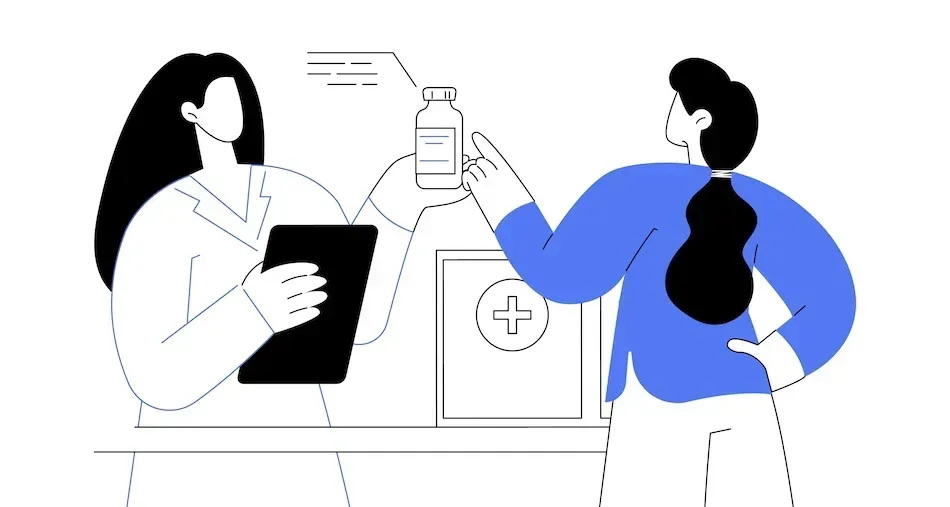CLL and SLL Are the Same Disease with One Difference

Lymphoma is a cancer that begins in cells of the lymph system, which is part of the immune system. The two main types of lymphoma are Hodgkin lymphoma and non-Hodgkin lymphoma. There are many kinds of non-Hodgkin lymphoma. Chronic lymphocytic leukemia (CLL) and small lymphocytic lymphoma (SLL) are both forms of non-Hodgkin lymphoma (NHL).
Why “Hodgkin”? In 1832, Dr. Thomas Hodgkin described several cases of people with symptoms of cancer involving the lymph nodes, which was originally named “Hodgkin’s disease.” Dr. Hodgkin was from a Quaker family and studied medicine in Edinburgh and Paris. He was one of the most prominent British pathologists of his time.
It Is All in the Names
CLL and SLL are slowly spreading cancers that affect white blood cells called lymphocytes. “Lymphocytic” means the cancers develop in white blood cells. The only difference between CLL and SLL is where the cancer primarily occurs—which part of the immune system. In CLL, most of the cancer cells are in the bone marrow and bloodstream. In SLL, most of the cancer cells are in the lymph nodes.
Both leukemias and lymphomas originate in white blood cells/lymphocytes. However, leukemia usually starts in the bone marrow (as does chronic lymphocytic leukemia), and lymphoma starts in the lymph nodes (as does small lymphocytic lymphoma).
CLL involves the bloodstream, bone marrow, lymph nodes, and spleen. If the cancerous cells spread primarily to the lymph nodes, CLL can become SLL. Symptoms, disease staging, and treatment recommendations are the same, as are survival rates (5-year relative survival rate of 87.7%) and other disease measures.
CLL and SLL Are Rare Diseases that Suppress the Immune System
Your immune system is a complex network of cells, tissues, organs, and the substances they make that help the body fight infections and other diseases. It includes white blood cells and organs and tissues of the lymph system, such as the thymus, spleen, tonsils, lymph nodes, lymph vessels, and bone marrow.
Bone marrow is spongy tissue inside bones that helps produce blood cells. Lymph nodes are glands that contain white blood cells and filter out waste. Your lymph nodes help your immune system protect your body against infection.
Why do they cause immunosuppression?
The exact cause of CLL and SLL is unknown, but both cause dysfunction in the body’s immune system. Immunosuppression is a common feature of CLL and SLL, meaning that the normal, protective immune responses to infection are inhibited.
Possible infections in patients with CLL or SLL include respiratory tract infections, which are most common (for example, pneumonia, sinusitis, or damaged airways called bronchiectasis), and skin and urinary tract infections. There is also a risk of herpesvirus infections and reactivation, such as shingles.
Why are they considered rare?
The FDA defines rare diseases as those that affect less than 200,000 people in the US. Although CLL is the most common type of leukemia in adults in Western countries, it is considered a rare disease. In the United States, only about 6 of 100,000 men and 3 of 100,000 women will be diagnosed with CLL or SLL during a year (estimates are based on 2017–2021 data).
Notably, patients with CLL or SLL have more than twice the risk of developing a second cancer and an increased frequency of certain cancer types, such as skin and prostate cancer.
For a Correct Diagnosis, It Is Important to Differentiate the Source of the Cancer
Your physician will provide a diagnosis based on the primary location of the cancer cells. You cannot have CLL and SLL at the same time because there will always be one primary location for these cells.
Learn more about your diagnosis and advances in treatment options by signing up for our newsletter.
Sources:
- Chronic Lymphocytic Leukemia (CLL) vs. Small Lymphocytic Lymphoma (SLL) (2024)
- World CLL Day - What is CLL?
- Cancer Stat Facts: NHL — Chronic Lymphocytic Leukemia/Small Lymphocytic Lymphoma (CLL/SLL) (2024)
- Lymphoma Research Foundation (2023)
- StatPearls - Chronic Lymphocytic Leukemia (2023)
- Preventing Infectious Complications in Chronic Lymphocytic Leukemia (2023)
Lymphoma is a cancer that begins in cells of the lymph system, which is part of the immune system. The two main types of lymphoma are Hodgkin lymphoma and non-Hodgkin lymphoma. There are many kinds of non-Hodgkin lymphoma. Chronic lymphocytic leukemia (CLL) and small lymphocytic lymphoma (SLL) are both forms of non-Hodgkin lymphoma (NHL).
Why “Hodgkin”? In 1832, Dr. Thomas Hodgkin described several cases of people with symptoms of cancer involving the lymph nodes, which was originally named “Hodgkin’s disease.” Dr. Hodgkin was from a Quaker family and studied medicine in Edinburgh and Paris. He was one of the most prominent British pathologists of his time.
It Is All in the Names
CLL and SLL are slowly spreading cancers that affect white blood cells called lymphocytes. “Lymphocytic” means the cancers develop in white blood cells. The only difference between CLL and SLL is where the cancer primarily occurs—which part of the immune system. In CLL, most of the cancer cells are in the bone marrow and bloodstream. In SLL, most of the cancer cells are in the lymph nodes.
Both leukemias and lymphomas originate in white blood cells/lymphocytes. However, leukemia usually starts in the bone marrow (as does chronic lymphocytic leukemia), and lymphoma starts in the lymph nodes (as does small lymphocytic lymphoma).
CLL involves the bloodstream, bone marrow, lymph nodes, and spleen. If the cancerous cells spread primarily to the lymph nodes, CLL can become SLL. Symptoms, disease staging, and treatment recommendations are the same, as are survival rates (5-year relative survival rate of 87.7%) and other disease measures.
CLL and SLL Are Rare Diseases that Suppress the Immune System
Your immune system is a complex network of cells, tissues, organs, and the substances they make that help the body fight infections and other diseases. It includes white blood cells and organs and tissues of the lymph system, such as the thymus, spleen, tonsils, lymph nodes, lymph vessels, and bone marrow.
Bone marrow is spongy tissue inside bones that helps produce blood cells. Lymph nodes are glands that contain white blood cells and filter out waste. Your lymph nodes help your immune system protect your body against infection.
Why do they cause immunosuppression?
The exact cause of CLL and SLL is unknown, but both cause dysfunction in the body’s immune system. Immunosuppression is a common feature of CLL and SLL, meaning that the normal, protective immune responses to infection are inhibited.
Possible infections in patients with CLL or SLL include respiratory tract infections, which are most common (for example, pneumonia, sinusitis, or damaged airways called bronchiectasis), and skin and urinary tract infections. There is also a risk of herpesvirus infections and reactivation, such as shingles.
Why are they considered rare?
The FDA defines rare diseases as those that affect less than 200,000 people in the US. Although CLL is the most common type of leukemia in adults in Western countries, it is considered a rare disease. In the United States, only about 6 of 100,000 men and 3 of 100,000 women will be diagnosed with CLL or SLL during a year (estimates are based on 2017–2021 data).
Notably, patients with CLL or SLL have more than twice the risk of developing a second cancer and an increased frequency of certain cancer types, such as skin and prostate cancer.
For a Correct Diagnosis, It Is Important to Differentiate the Source of the Cancer
Your physician will provide a diagnosis based on the primary location of the cancer cells. You cannot have CLL and SLL at the same time because there will always be one primary location for these cells.
Learn more about your diagnosis and advances in treatment options by signing up for our newsletter.
Sources:
- Chronic Lymphocytic Leukemia (CLL) vs. Small Lymphocytic Lymphoma (SLL) (2024)
- World CLL Day - What is CLL?
- Cancer Stat Facts: NHL — Chronic Lymphocytic Leukemia/Small Lymphocytic Lymphoma (CLL/SLL) (2024)
- Lymphoma Research Foundation (2023)
- StatPearls - Chronic Lymphocytic Leukemia (2023)
- Preventing Infectious Complications in Chronic Lymphocytic Leukemia (2023)
about the author
Jacqueline M. Mahon, MA
Jacqueline is delighted to be writing for HealthTree Foundation. She has extensive experience working in blood cancers as well as other oncologic and therapeutic areas. When not writing, she may be gardening, hiking, or playing with her rescue cat, Merlin.
More on Core Education
Trending Articles

Get the Latest Chronic Lymphocytic Leukemia Updates, Delivered to You.
By subscribing to the HealthTree newsletter, you'll receive the latest research, treatment updates, and expert insights to help you navigate your health.
Together we care.
Together we cure.
3x Faster.








